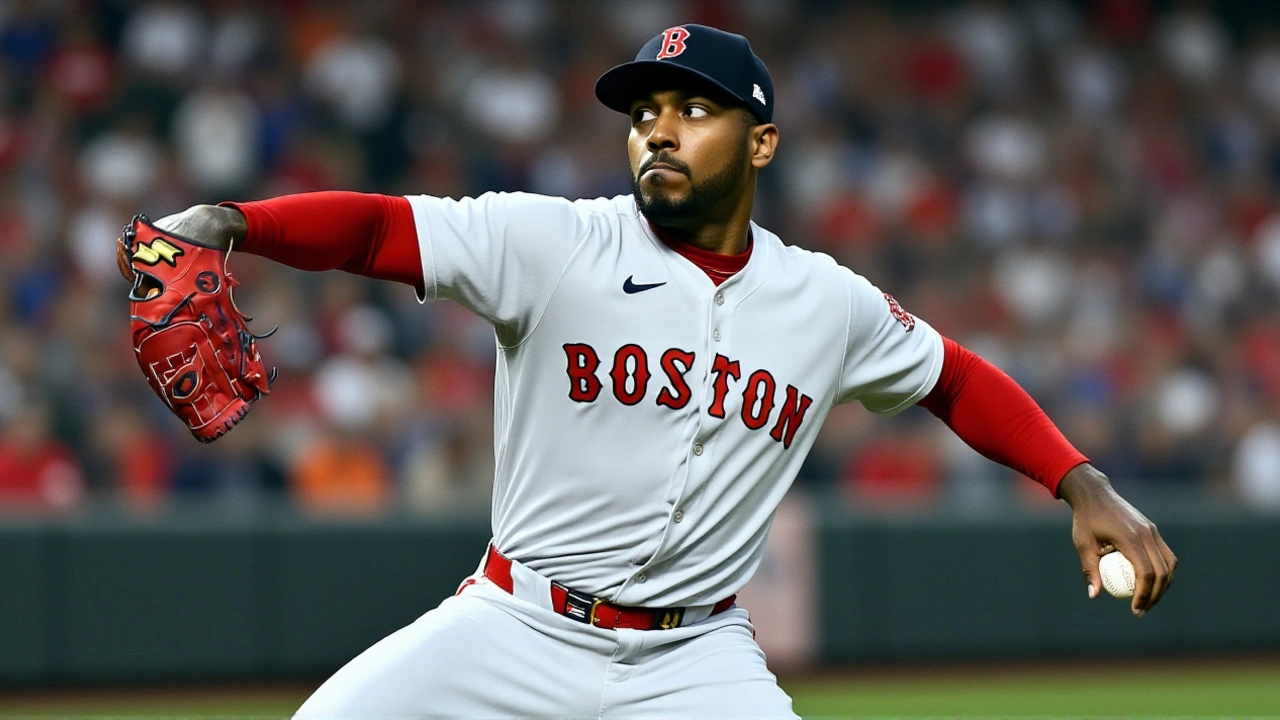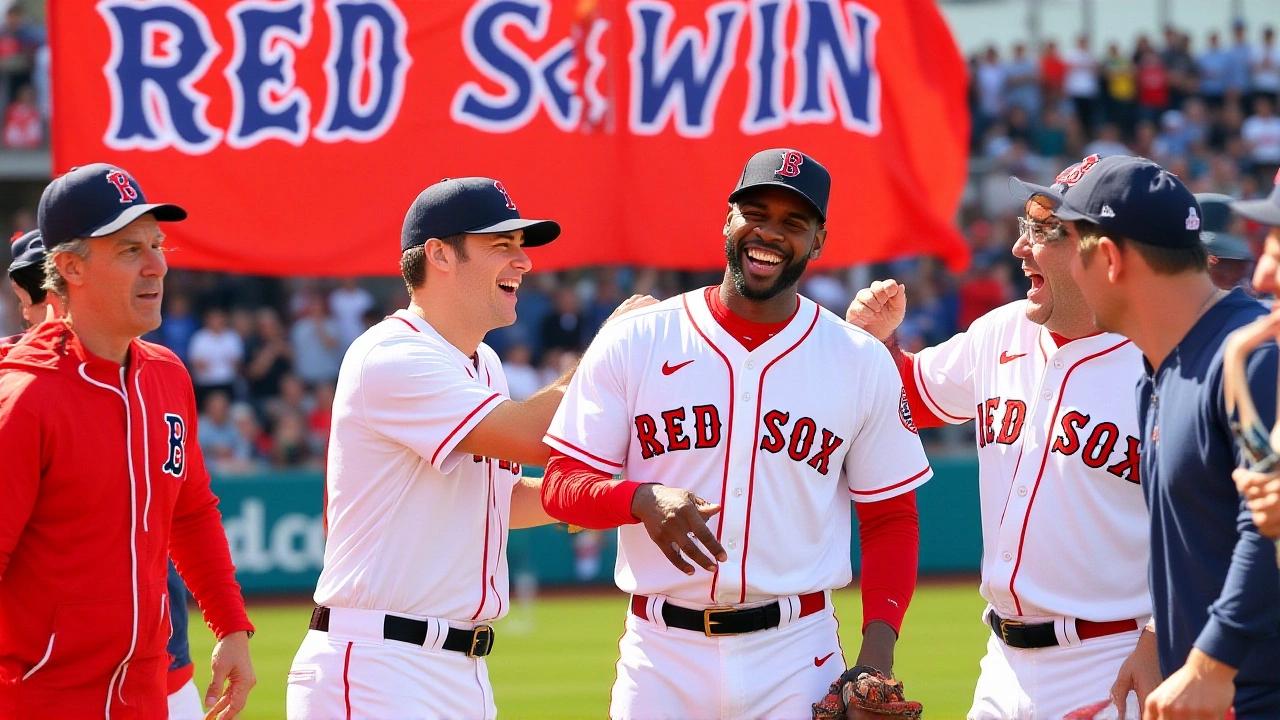When Aroldis Chapman, a 37‑year‑old closer, and the Boston Red Sox sealed a $13.3 million extension for the 2026 season on September 1, 2025, the baseball world took note. The deal, which adds a vesting‑mutual option for 2027, turns a one‑year "prove‑your‑worth" gamble into a longer‑term partnership. It was confirmed by MLB.com, though the club has yet to issue a formal press release. The timing is crucial: the Red Sox are gearing up for the American League Wild Card series, and Chapman’s arm has already shouldered 26 saves with a sparkling 1.00 ERA.
Background: Chapman’s Road to Boston
Chapman arrived in Boston last December on a modest one‑year contract after a turbulent stint with the New York Yankees, where his ERA rose above three for three consecutive seasons. The Cuban‑born pitcher, who boasts 361 career saves—13th all‑time—had seen his stock dip, but his fastball still tops out at 100 mph. A year later, he’s leading the league in strikeouts per nine innings, racking up 74 swing‑and‑miss Ks in 52 innings (some outlets list 77 strikeouts in 54 innings). The turnaround sparked talk of a late‑career renaissance, capped by an eighth All‑Star selection.
His performance didn’t happen in a vacuum. Earlier in the 2025 season, the Red Sox shocked fans by trading longtime star Rafael Devers in June, a move many called a "re‑boot". While the trade initially looked disastrous, it cleared payroll space and allowed Boston to double‑down on pitching depth, leading to moves like the Garret Crochet extension (see below).
Extension Details and Financials
The new contract guarantees Chapman $13.3 million for the 2026 season, with a vesting option that becomes a full guarantee if he logs at least 40 innings in 2025—something he’s already on track to exceed. Should he meet that threshold, the agreement escalates to a total of $26 million over two years, a figure that aligns with the market for elite closers on the brink of a Hall‑of‑Fame résumé.
Financial analysts note that the deal is structured to protect both sides. If Chapman’s performance wanes, the club can walk away after 2026; if he stays dominant, the vesting clause kicks in, securing his earnings and the bullpen’s stability. The contract also includes a mutual option for 2027, giving Boston the right to retain him for a third year at a pre‑negotiated salary, while Chapman retains the ability to walk if the fit deteriorates.
Impact on the Red Sox’s Season
Boston entered the postseason with a bullpen that, just a month earlier, was ranked near the bottom of the league. Chapman’s 1.00 ERA and 26 saves have flipped that script. In the Wild Card series against the Yankees, he logged 1.1 scoreless innings in Game 1, striking out two and allowing just three hits as the Red Sox edged a 3‑1 win at Yankee Stadium. That performance set the tone for a bullpen that now feels "unshakeable," according to insiders.
Manager Alex Cora, manager praised the "perfect marriage of two imperfect partners," referring to Chapman’s resurgence and the Red Sox’s organizational overhaul. "We’ve built an environment where veterans can thrive again," Cora said after the game, pointing to revamped analytics and a more player‑focused clubhouse culture.

Reactions from Team and League
Teammates echoed Cora’s sentiment. Starting pitcher Garret Crochet, pitcher, who secured a six‑year, $170 million deal earlier in the season, called Chapman "the missing piece" that allowed him to pitch with confidence, knowing the back end was locked down.
Across the league, other teams took note. A source close to the Chicago White Sox said the Red Sox’s willingness to lock up a high‑velocity reliever signals a shift away from purely rebuilding toward immediate contention. Even rival Boston fans, who were skeptical after the Devers trade, now see a legitimate chance at a World Series run.
Looking Ahead: 2026 and Beyond
With the extension in place, the Red Sox have a cornerstone for the next two seasons. The question now is whether the front office will complement Chapman’s dominance with more depth—perhaps targeting a high‑leverage left‑handed setup man or investing in a versatile swingman. The payroll impact is manageable; the $26 million guarantee fits comfortably under the luxury tax threshold, leaving room for the team to address other needs.
Should Chapman continue his 1.00‑ERA trajectory, he could become the first pitcher since Mariano Rivera to post a sub‑1.00 ERA over a full season and a half with a new team. That would not only cement his legacy but also validate Boston’s gamble after a "horrid" 2024.
Frequently Asked Questions
How does the extension affect the Red Sox’s bullpen strategy?
By locking Chapman in through 2026, Boston can build around a reliable closer and focus on acquiring set‑up relievers who complement his fastball‑dominant style. The guaranteed salary also frees up short‑term budget, allowing the front office to explore low‑cost, high‑upside arms without jeopardizing the back end of the bullpen.
What were the key terms of Chapman’s new deal?
The contract delivers $13.3 million for 2026, with a vesting clause that triggers a total of $26 million over two years if Chapman pitches at least 40 innings in 2025. It also includes a mutual option for 2027, giving both player and club a chance to extend the partnership at a pre‑agreed salary.
How did Chapman perform in the Wild Card series?
In Game 1 at Yankee Stadium, Chapman threw 1.1 scoreless innings, striking out two batters and surrendering just three hits. His calm presence helped Boston secure a 3‑1 win, and he was slated to appear again in Game 2, underscoring his role as the bullpen’s ace.
What was the reaction from Alex Cora and the clubhouse?
Cora hailed the extension as a "perfect marriage of two imperfect partners," emphasizing the cultural shift within the organization. Veteran pitcher Garret Crochet echoed the sentiment, saying Chapman’s presence gives the staff confidence that games can be closed out cleanly.
How does this move fit into the Red Sox’s broader rebuild after trading Rafael Devers?
The Devers trade cleared significant payroll and signaled a shift toward a younger, pitcher‑heavy roster. Securing Chapman, along with Crochet’s long‑term deal, shows Boston is no longer rebuilding but aiming for immediate contention, banking on a strong pitching core to carry the team into the postseason.



